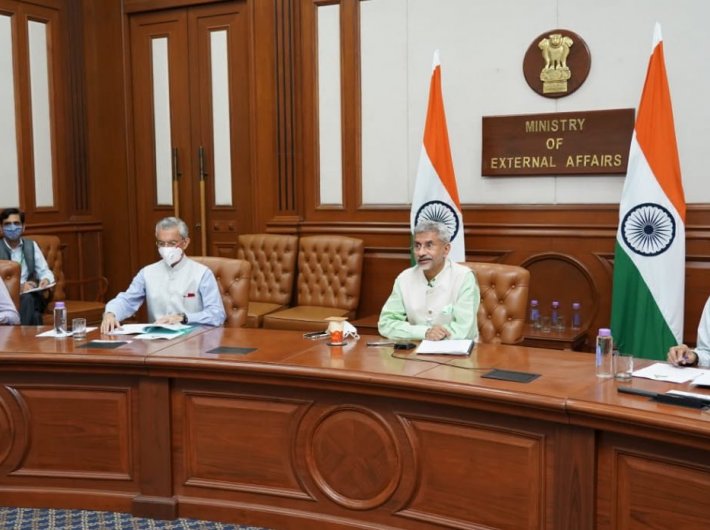International observers will keenly watch the Chinese Communist Party Central Committee meeting next month. The central committee is the highest organ of the CCP with a mandate to execute the decision of the National Congress which is convened once every five years.
Besides economy, rising tension with the US in the South China Sea, tension with India on the Line of Actual Control (LAC), and the worrisome situation for China in Taiwan and Hong Kong are expected to figure during the meeting.
Experts say president Xi Jinping and his chosen loyalists in the central committee will not like Chinese PLA troops to withdraw from the areas they have occupied without getting assurances from adversaries of supporting Chinese interests. In fact, at the high-power central committee meet, neither Xi nor his confidants will like leaders who are critical of the president’s style of functioning, question his handling of growing anti-China sentiments around the world and his ability to protect China’s interests. They want PLA troops to be aggressively prepared to face any consequences on the border.
“It is highly unlikely that China will withdraw from any of the territory [friction points] soon,” Jayadeva Ranade, head of the Centre for China Analysis and Strategy, said.
In view of China’s approach to the standoff at the LAC, these remarks need a clear-headed assessment. Remember, between September 10 and September 22, two joint statements – one from the diplomatic side and another after the conclusion of the 6th round of military-level talks – were issued. And both talk about disengagement, peace and tranquility on the border.
However, disengagement is not an easy process. It is a complex process that requires redeployment of troops by each side towards their regular posts on their respective side of the LAC. Without mutually agreed reciprocal action from both sides, disengagement can’t take place. Also, given China’s history of deception and deceit tactics in dealing with its border disputes with neighbours – from South Asia to Southeast Asia to Central Asia – India doesn’t want to blindly believe in what China says with regard to disengagement of troops on the border.
“Words have to be matched with actions on the ground,” a senior government official said. After the Galwan Valley incident, India is particularly concerned whether China under the leadership of Xi can ever become a good neighbor. Can it do away with its expansionist policy – a major cause of growing trust deficit between the two countries?
After the 2017 Doklam standoff, both India and China had held two informal summits; first, in Wuhan in April 2018 and second in Mahabalipuram in October 2019. Core of these informal summits held between prime minister Narendra Modi and Xi was confidence building measures, strengthening of existing institutional arrangement and information sharing mechanism to prevent incidents in border regions.
At the Mahabalipuram summit, both sides had welcomed the work of the Special Representatives for a fair, reasonable and mutually acceptable settlement of border disputes on the basis of political parameters and guiding principles that were agreed upon by the two countries in 2005. Just six months after this summit where Modi had given the visiting Xi a guided tour of the famed sculpture town of Mahabalipuram, the Chinese president ordered his PLA military brass in April 2020 to intrude in eastern Ladakh and teach India a lesson.
Physical encounter, push and shove between Indian and Chinese troops started taking place on the LAC from the first week of May. On June 15, a 45-year-old record of no fatalities on the India-China was broken, when 20 Indian soldiers died in a scuffle with Chinese soldiers in the Galwan Valley.
Several rounds of military and diplomatic level talks have taken place between the two sides, but standoff continues at friction points like Pangong Tso, Depsang, Gogra and Hot Spring. Last meeting to resolve the standoff between the two sides was held on September 21 when senior commanders of the two countries met – soon after external affairs minister S Jaishankar and his Chinese counterpart Wang Yi held talks in Moscow on September 10 on the sidelines of SCO foreign ministers’ conclave. Following the senior commanders’ meeting, for the first time, the two sides issued a joint statement.
As per the joint statement, the Indian and Chinese senior commanders at the 6th rounds of military commander-level meeting, “agreed to earnestly implement the important consensus reached by the leaders of the two countries, strengthen communication on the ground, avoid misunderstandings and misjudgments, stop sending more troops to the frontline, refrain from unilaterally changing the situation on the ground, and avoid taking any action that may complicate the situation.
“The two sides also agreed to hold the 7th round of military commander-level meeting as soon as possible, take practical measures to properly solve problems on the ground, and jointly safeguard peace and tranquility in the border area,” read the joint statement.
Yet the Global Times, the mouthpiece of Communist Party of China (CPC), maintains, “When winter comes, the Chinese military will widen the capability gap against the Indian military, thanks to its superior logistics support system, infrastructure and strategic positions.” It clearly signals that China is not interested in withdrawing its troops from friction points in eastern Ladakh and resolving the tension with India. Instead, the dragon is prepared for a long haul and possible conflict at the border.
“The two sides still remain divided on many concrete issues and continue to prepare for possible military conflicts with logistical and troop build-up,” the Global Times says, indicating clearly that talks with India are merely a camouflage for China to continue with deception and deceitful tactics against its southern neighbour. It may engage in a short-term conflict with India in border areas to help Xi further strengthen his hold within the CPC. But the big question is: Will not any conflict with today’s India escalate into a full-fledged war? Can China afford to have a war with India, which is a nuclear power also?

